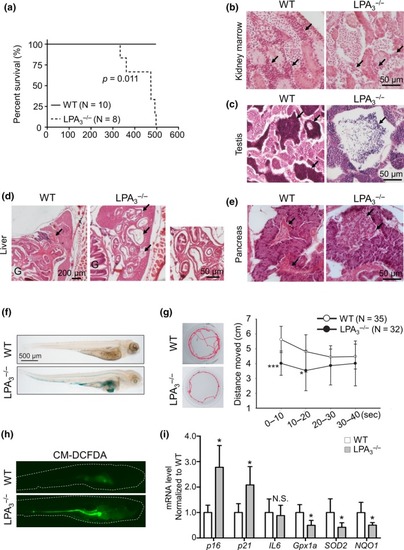|
LPA3 deficiency in zebrafish leads to premature aging phenotypes. (a) Kaplan–Meier survival analysis demonstrated a shorter lifespan in Lpa3−/− zebrafish than in corresponding WT siblings (p value = .011, N > 8). (b) Histological analysis shows hematopoietic stem cells loss in kidney marrow of 6‐month‐old Lpa3−/− zebrafish. (c) Sperm loss in the testis. (d) Bile duct hyperplasia. (e) Islet hyperplasia in the pancreas. (f) By senescence‐associated β‐gal staining assay, Lpa3−/− larvae show a positive β‐gal signal. (g) Representative images of zebrafish swimming tracks obtained and analyzed by locomotor. Locomotor results show that Lpa3−/− larvae had lower mobility than WT upon drastic light onset and offset. (h) CM‐DCFDA staining showed increased ROS levels in 5 dpf Lpa3−/− larvae. (i) Real‐time qPCR showed enhanced p16 and p21, whereas reduced Gpx1a, SOD2, and NQO1 of 5 dpf Lpa3−/− larvae. β‐Actin was used as internal control. ANOVA and Student's t test; *p < .05, ***p < .001
|

